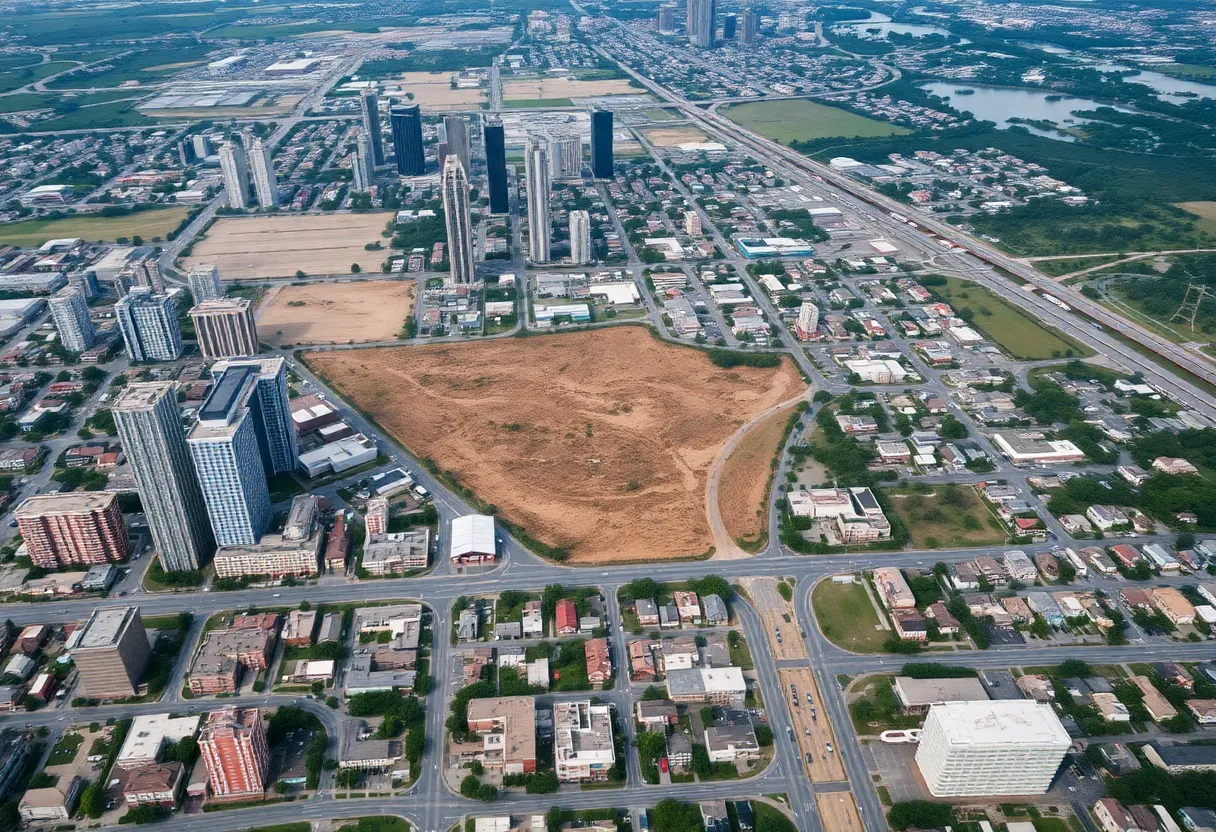News Summary
A recent study by the Columbia Climate School reveals that Houston is the fastest-sinking city in the U.S., with over 40% of the area sinking at alarming rates. This alarming trend poses significant infrastructure risks and calls for immediate action to manage groundwater use and address the impacts of climate change. Other Texas cities like San Antonio and Dallas are also facing similar challenges, emphasizing the urgent need for effective urban planning and adaptation strategies.
Houston is identified as the fastest-sinking city in the United States, according to a recent study conducted by the Columbia Climate School and published in the journal Nature Cities. This urgent report highlights that a significant portion of urban areas across the nation, including Houston, are experiencing alarming rates of land subsidence.
The study evaluated land movement in 28 of the most populous U.S. cities, concluding that all examined locations are sinking to varying degrees. In Houston, more than 40% of the area is sinking at a rate exceeding 5 millimeters (about ⅕ of an inch) per year, while approximately 12% of the city is sinking at a rate of over 10 millimeters per year. Certain regions of Houston are reportedly sinking as quickly as 5 centimeters per year.
The Causes of Subsidence
Classified as subsidence, this phenomenon occurs primarily due to groundwater pumping and oil extraction. The study indicates that groundwater extraction mainly contributes to Houston’s subsidence, being responsible for approximately 80% of the ground sinking. Groundwater is crucial for both agricultural purposes and public water supply within the city.
Moreover, the local oil and gas industry has additional implications for subsidence, especially with major companies relocating operations to Houston. The increasing demand for groundwater, particularly noticeable during drought periods, amplifies the issue, further destabilizing the landscape.
Impact on Other Texas Cities
Houston is not alone in this challenge. Other Texas cities, such as San Antonio and Dallas, are also experiencing significant degrees of subsidence, contributing to a concerning trend where these three cities represent over 60% of the U.S. population living on sinking land.
Statistical Overview
Utilizing advanced satellite data, the study tracked vertical land movement in urban areas with populations exceeding 600,000. In total, it was found that in 25 of the 28 cities surveyed, at least 65% of urban areas are sinking. This alarming trend points to the greater vulnerabilities faced by metropolitan areas that are already susceptible to flooding and climate change impacts.
Flooding and Infrastructure Risks
The report argues that the threat of subsidence poses latent risks of infrastructure damage and increased vulnerability to floods. Urban areas affected by sinking land could face critical challenges in disaster preparedness and response due to their instability.
Future Outlook and Solutions
As climate change and population growth are expected to exacerbate these conditions, city planners must consider comprehensive strategies for combating subsidence. Solutions could include managing groundwater use more effectively, updating building codes to reflect current risks, closely monitoring land levels, and retrofitting infrastructure to meet the diverse needs of each city.
In summary, the rising concerns regarding Houston and other Texas cities underscore the urgent need for action as subsidence continues to reshape urban landscapes. Awareness and proactive measures are essential to adapt to these environmental changes and to safeguard both infrastructure and communities in the face of inevitable shifts attributable to climate factors.
Deeper Dive: News & Info About This Topic
HERE Resources
Additional Resources
- KHOU 11 News: Houston Sinking
- Wikipedia: Subsidence
- Houston Chronicle: Sinking City
- Google Search: Land Subsidence
- Fast Company: Houston Sinking
- Google Scholar: Groundwater Pumping Subsidence
- Houston Chronicle: Scientific Study on Sinking
- Encyclopedia Britannica: Subsidence
- Newsweek: Sinking Major Cities
- Google News: Houston Sinking Land

Author: STAFF HERE HOUSTON TX WRITER
The HOUSTON STAFF WRITER represents the experienced team at HEREHouston.com, your go-to source for actionable local news and information in Houston, Harris County, and beyond. Specializing in "news you can use," we cover essential topics like product reviews for personal and business needs, local business directories, politics, real estate trends, neighborhood insights, and state news affecting the area—with deep expertise drawn from years of dedicated reporting and strong community input, including local press releases and business updates. We deliver top reporting on high-value events such as Houston Livestock Show and Rodeo, Art Car Parade, and Chevron Houston Marathon. Our coverage extends to key organizations like the Greater Houston Partnership and Houston Area Urban League, plus leading businesses in energy and healthcare that power the local economy such as ExxonMobil, Schlumberger, and Houston Methodist. As part of the broader HERE network, including HEREAustinTX.com, HERECollegeStation.com, HEREDallas.com, and HERESanAntonio.com, we provide comprehensive, credible insights into Texas's dynamic landscape.





